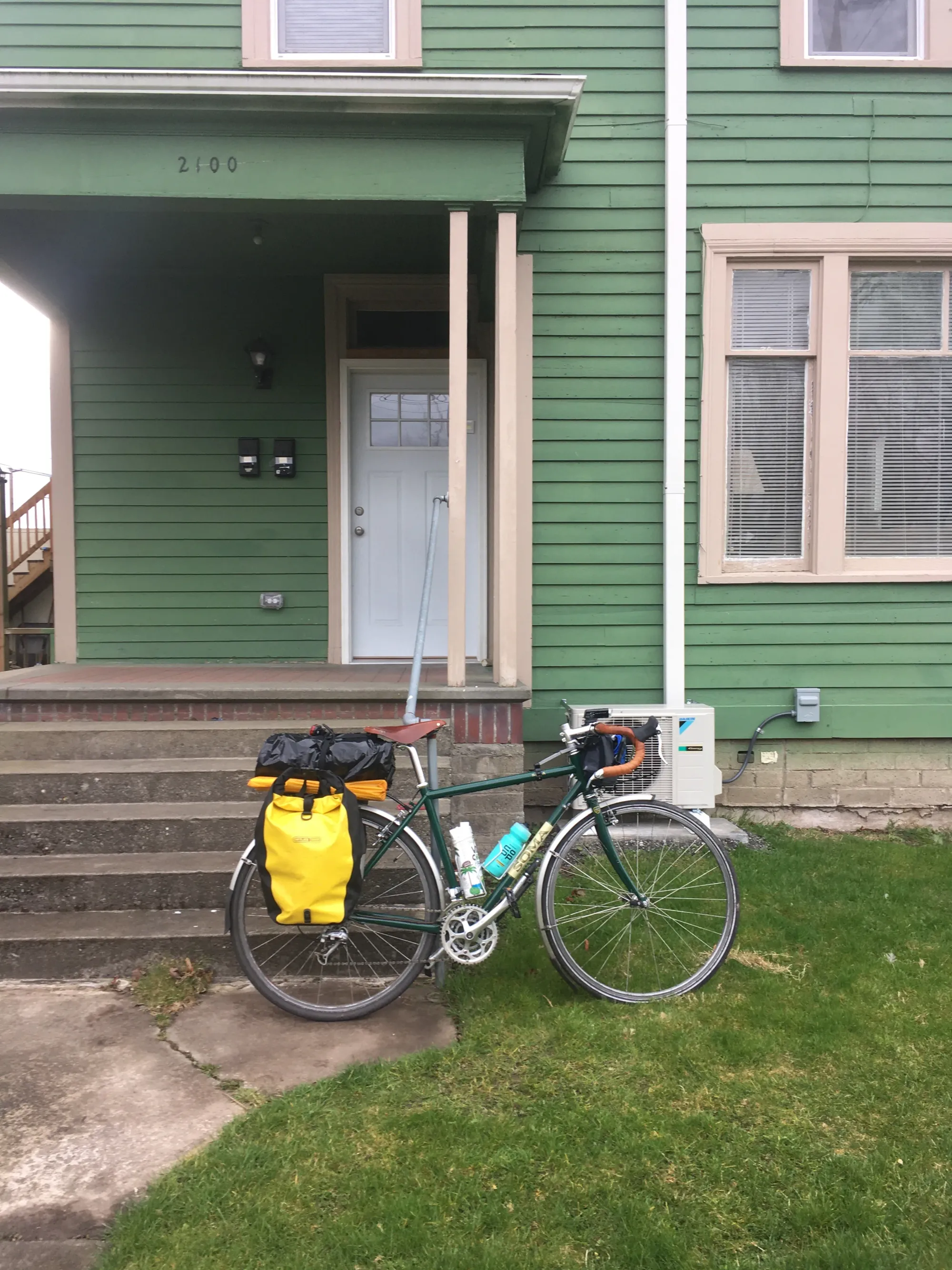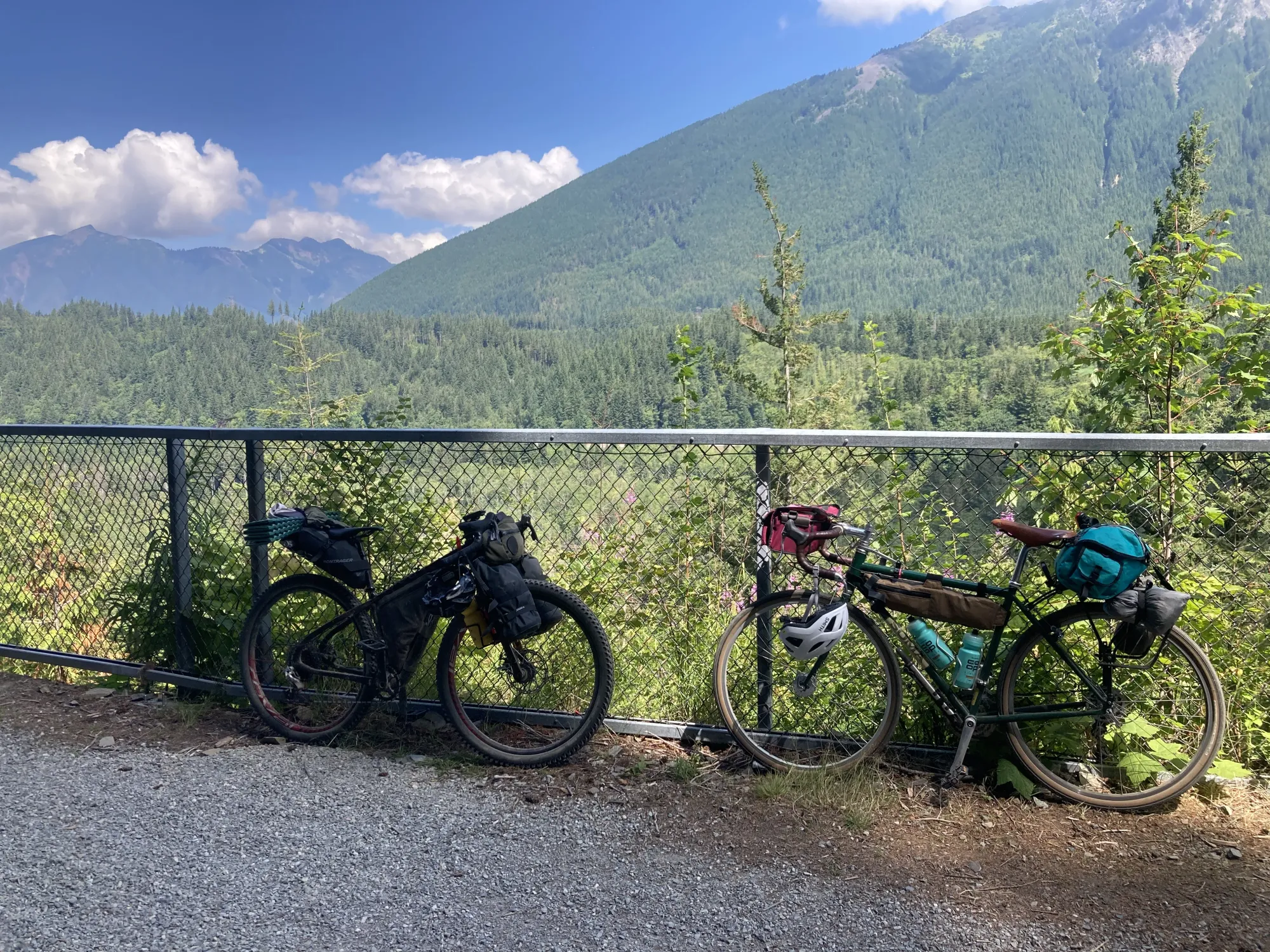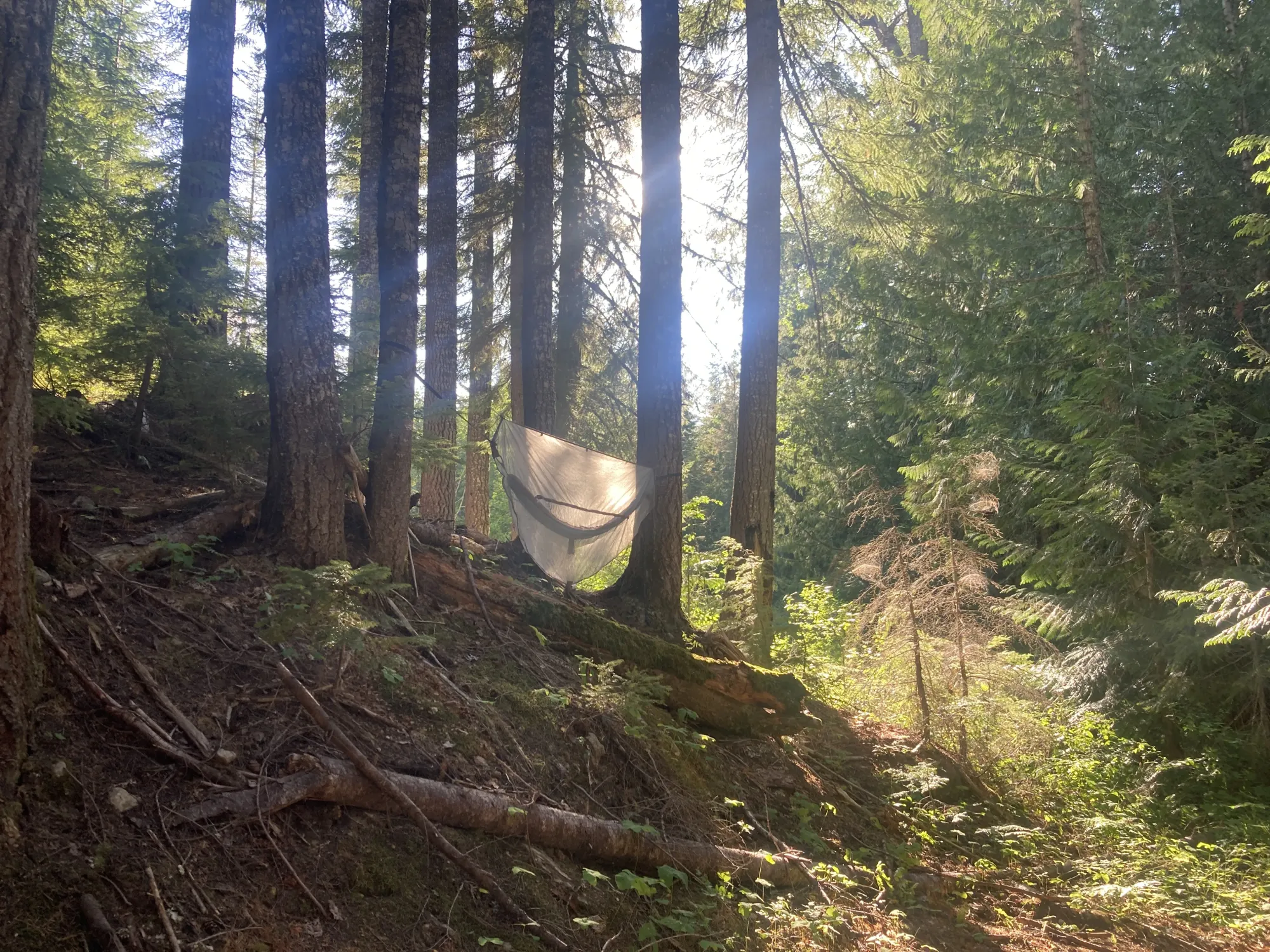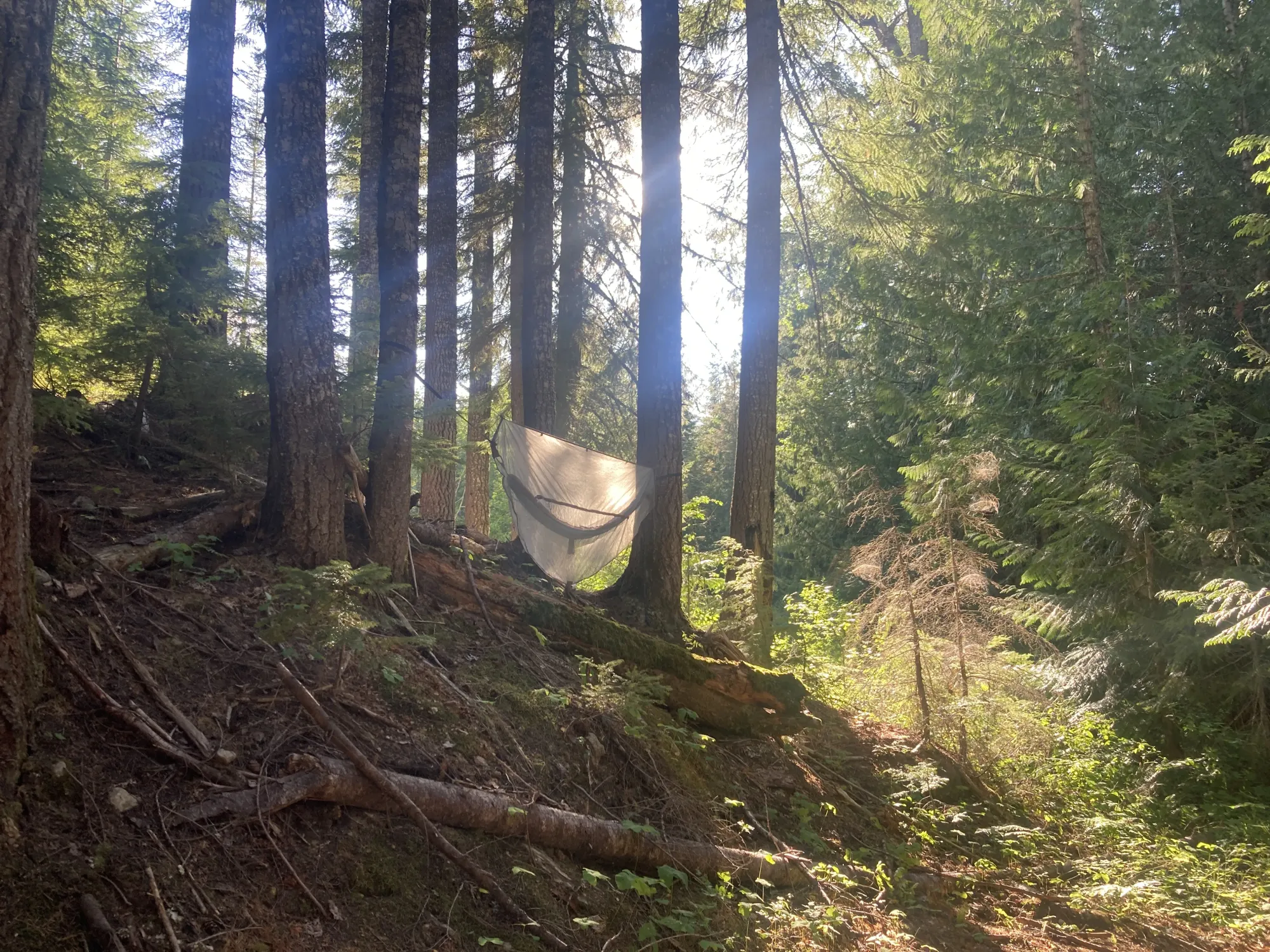The local bike co-op has started leading overnight trips outside the city. I took the fenders off my bike, put on the widest tires that would fit, and joined a recent overnight gravel ride along the Iron Horse/Palouse to Cascades trail. The route took us east from North Bend, WA about 35 miles, up into the Cascades, through a very long and dark tunnel, ending up at a campsite near Keechelus Lake. We biked back down the next day.

Typical touring setup
I've only done a few overnight trips with my bike, the first of which I dreamt up during some serious Covid-19 lockdown-induced cabin fever. I desperately needed to leave our house and get very far away from my cooped up little life, so I decided I would start training to ride to a town a hundred miles away. I would bike over the weekend, 50 miles each day, and camp one night in between on the way. I'd work remotely from the town for a week and then bike back the following weekend.
The plan was to go in March, which I told myself was basically spring. This was a lie; it was definitely still winter as evidenced by the historic snowstorm that hit the weekend I was supposed to leave. When it was clear that my bike would not make it through the snow on the ground, I postponed the trip by a week. The snow had thankfully mostly melted by then, so off I went.

I packed two big panniers on either side of my rear rack, tent poles and trash bag-wrapped sleeping pad on top of the rack, and a small fanny pack that also doubled as a handlebar bag. "Big panniers in the back" is a pretty typical touring setup, and it worked well. But it was heavy on hills and I was curious to try a different setup for the Iron Horse trail, which would be all uphill the first day.
Snacks over sleeping equipment
I'd read about hammock camping and had a hammock I'd been gifted but never used. When better to try it out than a summer bikepacking trip? I saved tons of space by going with a hammock over a tent, sleeping pad, and sleeping bag. Instead of packing my bike mostly full of sleeping equipment, I packed it full of snacks, and the setup was still many pounds lighter than my previous setup. This would be good since the trail would climb about 2600' into the mountains.

By the end of the day, I felt like the tradeoffs had been more than worth it. My hammock went up quickly and looked amazing hanging between trees in our backcountry campsite. I biked fast, my legs didn't feel like jelly, and I had food to spare. I felt smart and outdoorsy.

Only when the sun went down did I start second guessing my packing strategy. It had been hot and sunny during the day while we were riding uphill, but we were in the mountains after all and the temperature dropped into the 50s that night. Instead of a sleeping bag, I had a bunch of extra Cheez-its. I did not sleep well.
BYOUQ
Here's what I wish I'd known about how to stay warm when hammock camping in cooler temperatures: bring a sleeping bag. But a sleeping bag inside the hammock would not have been not enough. When your body weight compresses the material in a sleeping bag, the bag loses its ability to create an insulating layer around you. In a tent, you mitigate this by putting an insulating pad on the ground between the compressed layer and the cold earth. In a hammock, you need a thing called an underquilt that you hang up and goes underneath the hammock. It may also be possible to hang your hammock inside your sleeping bag.
I haven't given up on hammock camping! A hammock and sleeping bag is still less to pack on a bike and keep of track of than a tent, tent poles, sleeping bag, and sleeping pad. I also loved how quickly it went up and came down.
Have you bikepacked with a hammock? I'd love to hear how it went in the comments.

Member discussion